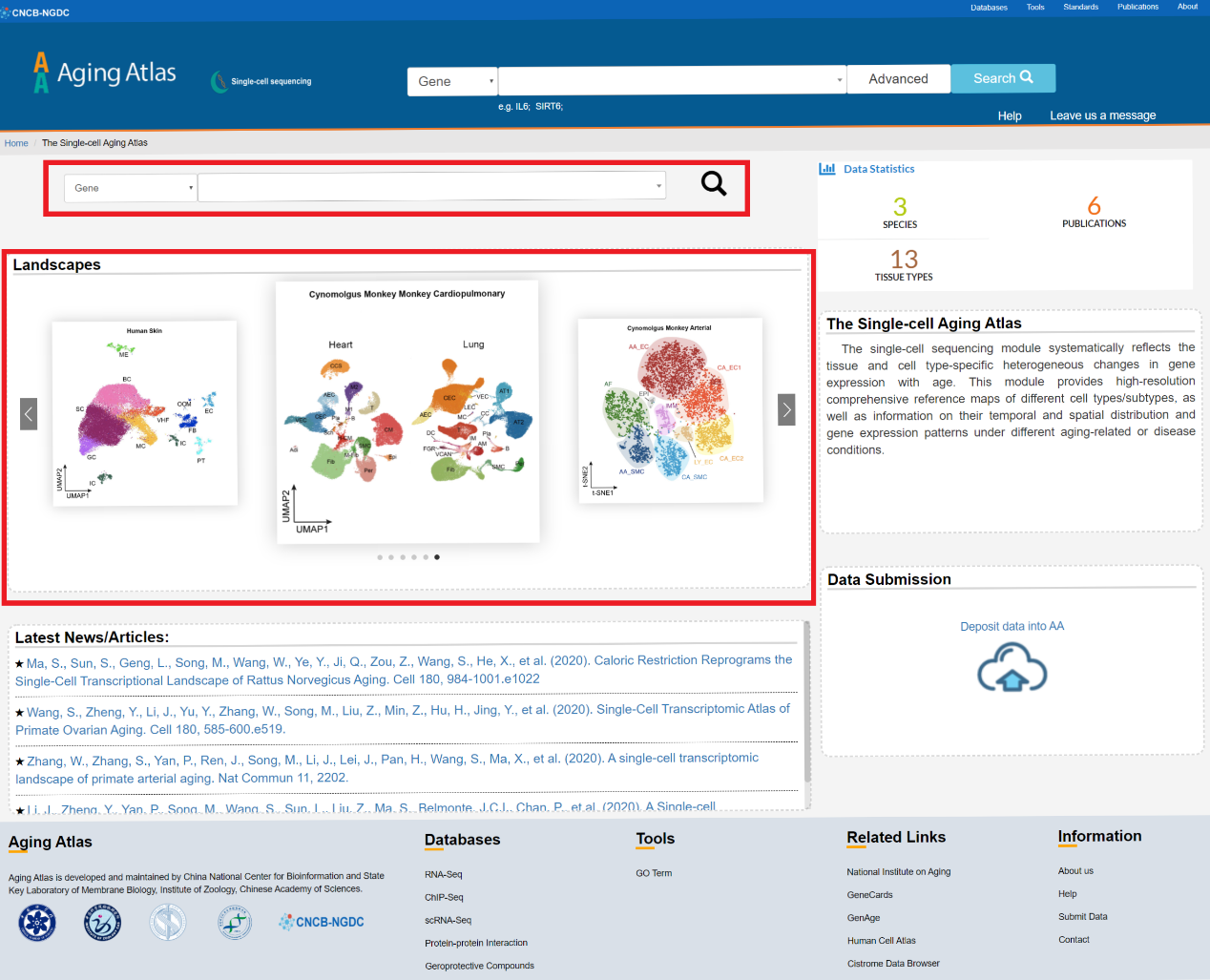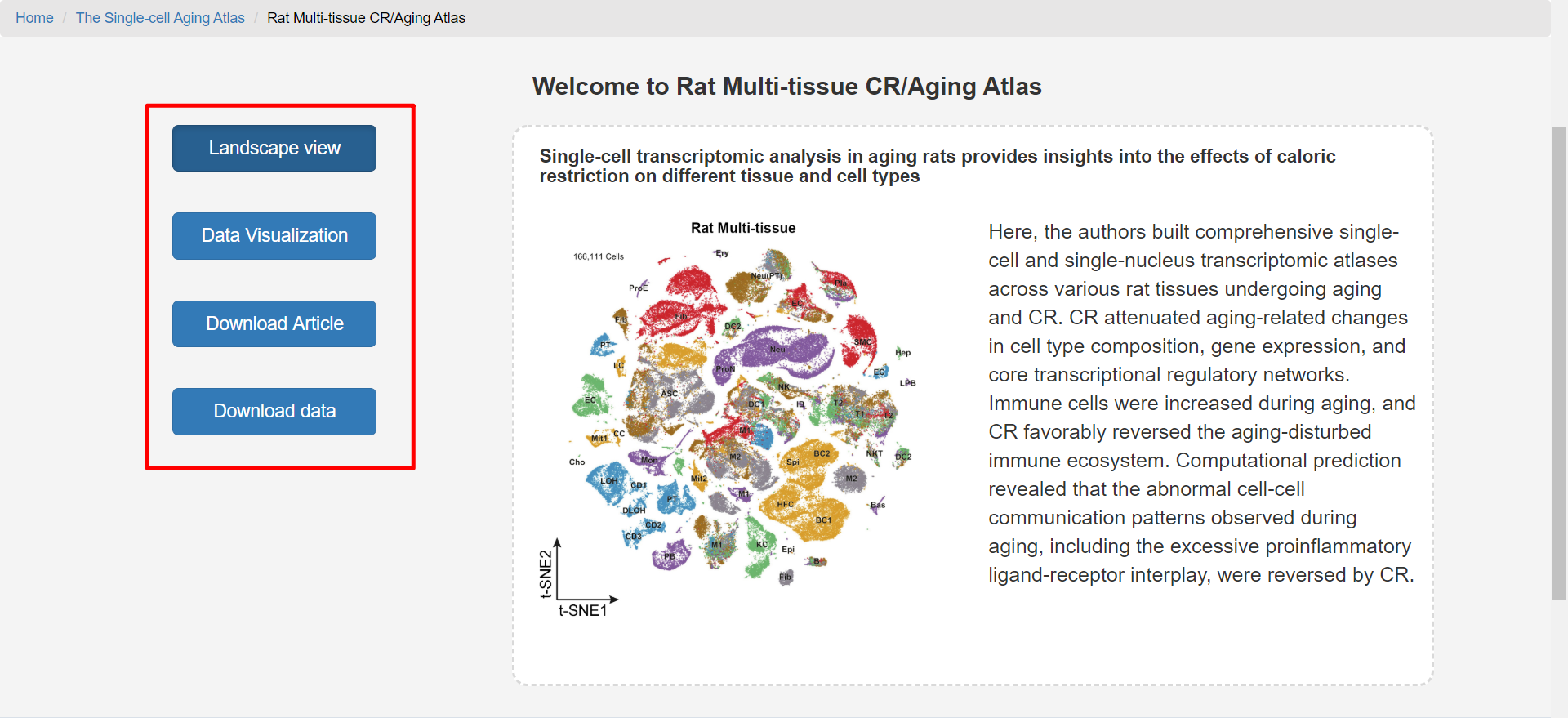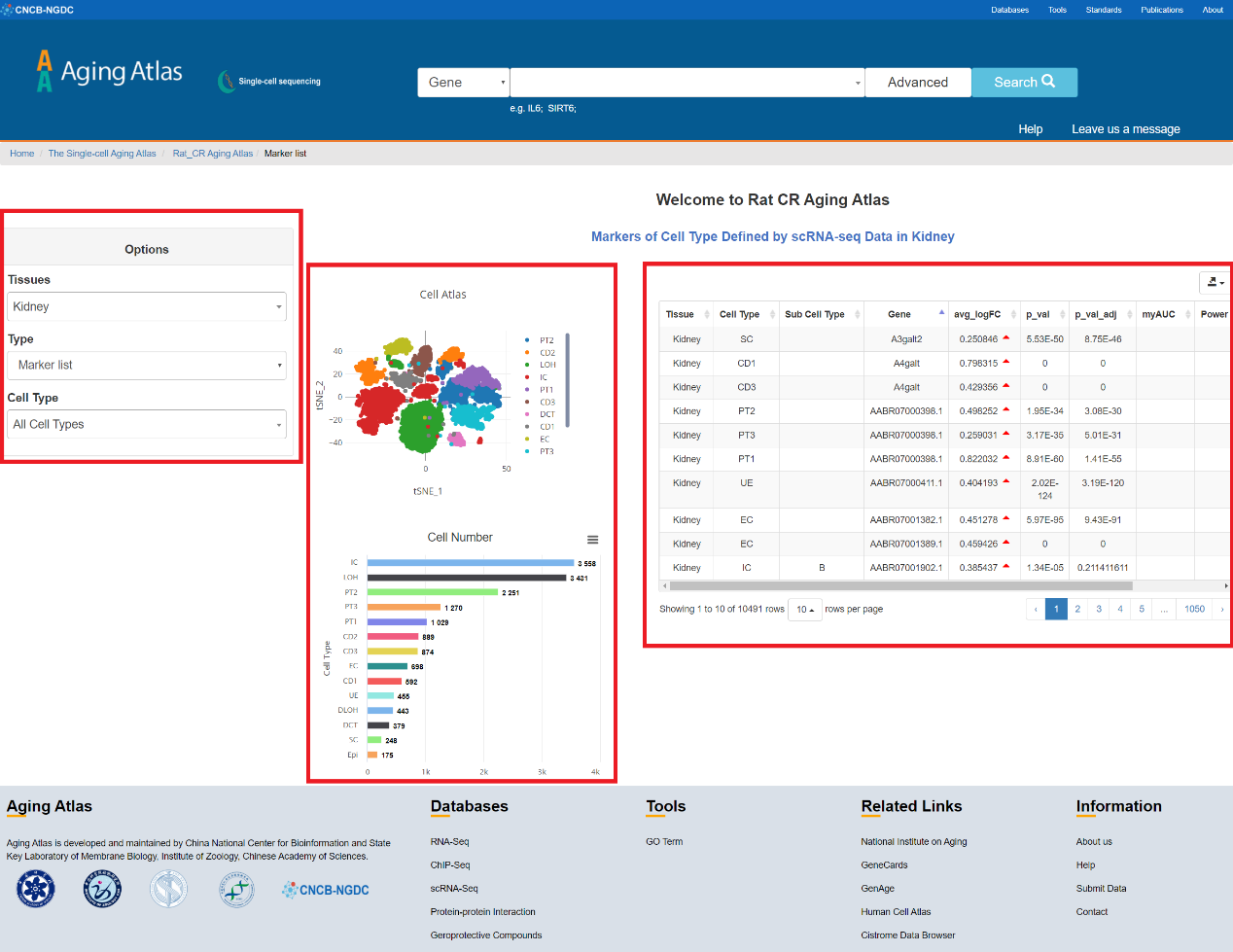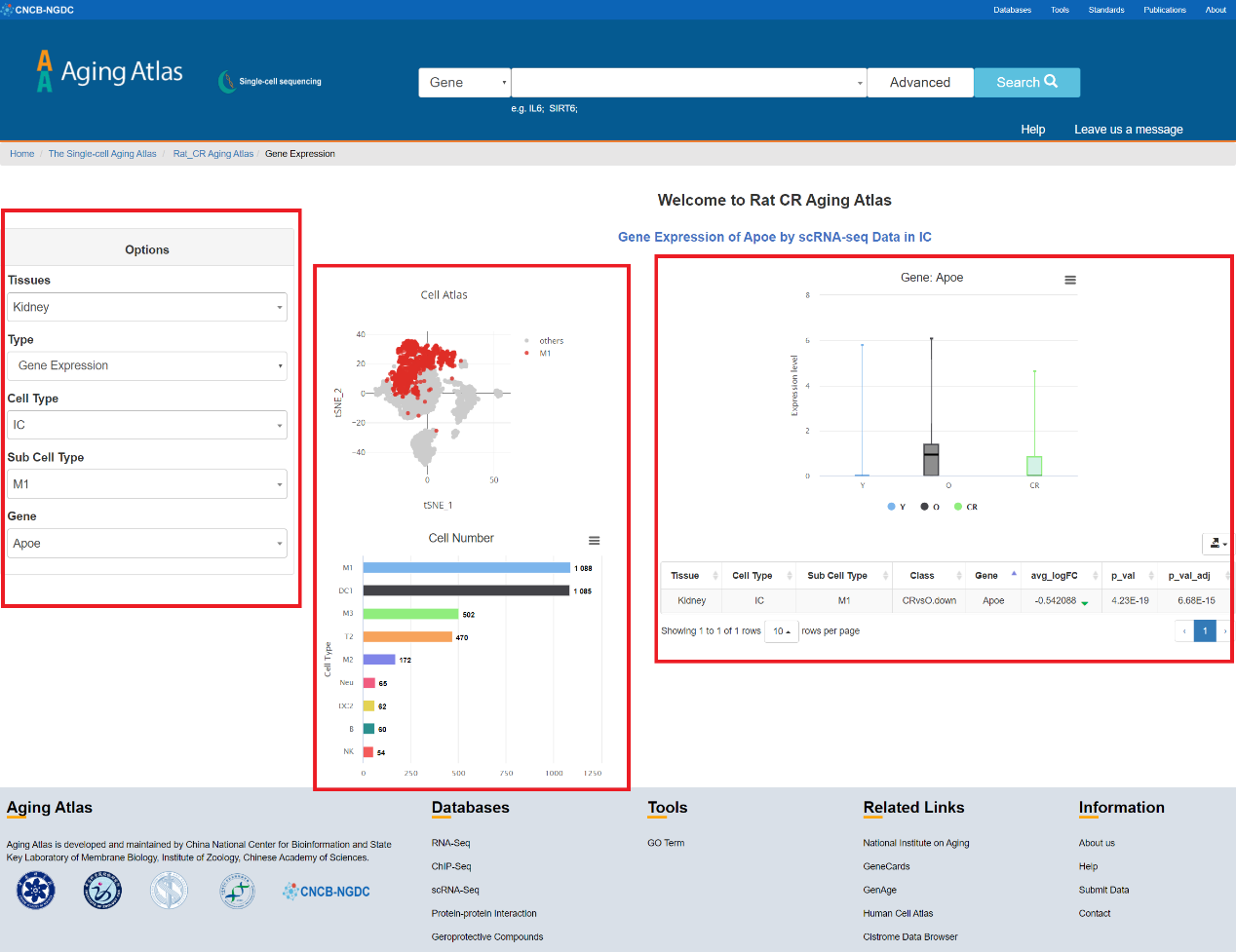scRNA-Seq
The scRNA-seq (single-cell RNA sequencing) module in the Aging Atlas database is designed to decode aging with single-cell resolution level, and mainly collects the latest published scRNA-seq data related to aging. We provide a user-friendly visual interface. Users can easily obtain information about specific species, specific tissues and specific cell types, including cell numbers, known or new marker genes, and differentially expressed genes (DEGs) during aging or aging intervention, and can be downloaded further.
1. On the scRNA-seq homepage: users can view the newly published aging-related single-cell data set in the "Landscapes" scroll bar. When clicking on a atlas, it will jump to the sub-page of the data set. In addition, users can also search for genes in the search column, and by selecting species and tissues, they can easily find the relevant information of the genes of interest at single-cell resolution. In addition, we also provide a single-cell data upload portal to facilitate users to upload their own single-cell sequencing data to our website.


2. On the atlas page: we provide an introduction to the atlas, data visualization, related articles and links to download the original data. Click the data visualization button to enter the next level of directory. On the data visualization page: users can select tissue type, marker gene list or differentially expressed gene list, and cell type or cell subtype in the options column on the left. At this time, the selected cell type will be highlighted in the entire map according to the options content on the right, and the number of corresponding cell types will be displayed at the bottom.

3. It is worth noting that when the user selects the marker gene list in the options column, the marker gene list corresponding to the cell type will be displayed on the web page, and the user can view these genes in real time; when selecting the differentially expressed gene (DEG) list and entering the specified gene, the expression of the selected genes in different physiological age groups is quickly showing. Users can download this information and conduct follow-up research.


